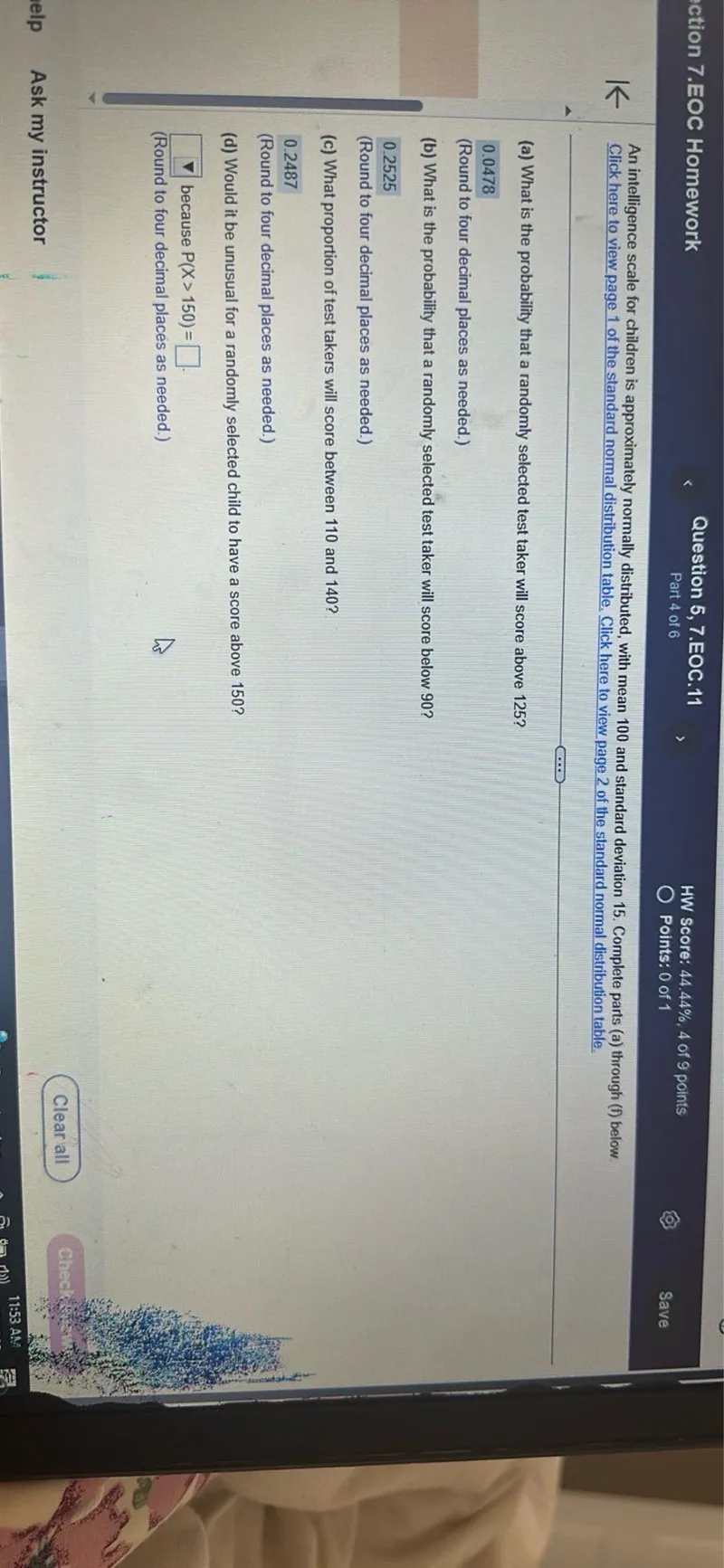Questions: An intelligence scale for children is approximately normally distributed, with mean 100 and standard deviation 15. Complete parts (a) through (f) below. (a) What is the probability that a randomly selected test taker will score above 125 ? 0.0478 (b) What is the probability that a randomly selected test taker will score below 90 ? 0.2525 (c) What proportion of test takers will score between 110 and 140 ? 0.2487 (d) Would it be unusual for a randomly selected child to have a score above 150 ? because P(X>150)= .

Transcript text: An intelligence scale for children is approximately normally distributed, with mean 100 and standard deviation 15. Complete parts (a) through (f) below.
(a) What is the probability that a randomly selected test taker will score above 125 ?
\[
0.0478
\]
(b) What is the probability that a randomly selected test taker will score below $90 ?$
0.2525
(c) What proportion of test takers will score between 110 and 140 ?
0.2487
(d) Would it be unusual for a randomly selected child to have a score above 150 ?
$\square$ because $P(X>150)=$ $\square$ $\square$.





